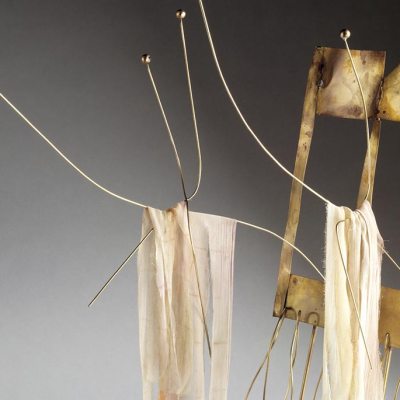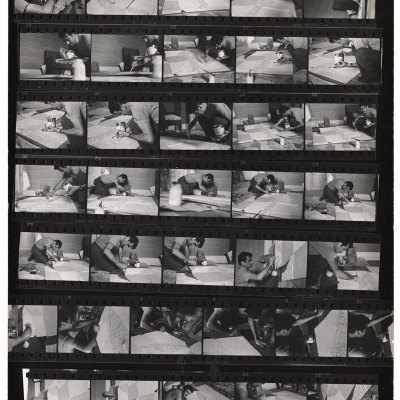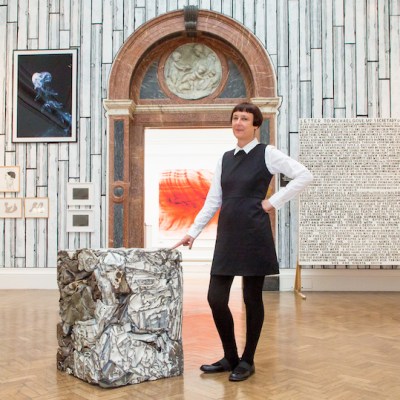There may be a self-portrait by Fausto Melotti (1901–86) on the first floor of Hauser & Wirth’s 69th Street Gallery, but if you want to see the artist at his best, head straight upstairs to see The Snow (1973). A wire figure, embellished with minute fabric flowers as head and shoulders, hands gloved in gauze, conducts a symphony of fabric snowflakes hanging from an open geometric structure, which quiver into a storm with the breeze of your arrival. This absurd scene, trembling between the figuration and abstraction and fusing geometry, music, and poetry, is a splendid embodiment of Melotti’s 50-year career.
Snow (1973), Fausto Melotti. © Fondazione Fausto Melotti, Milan
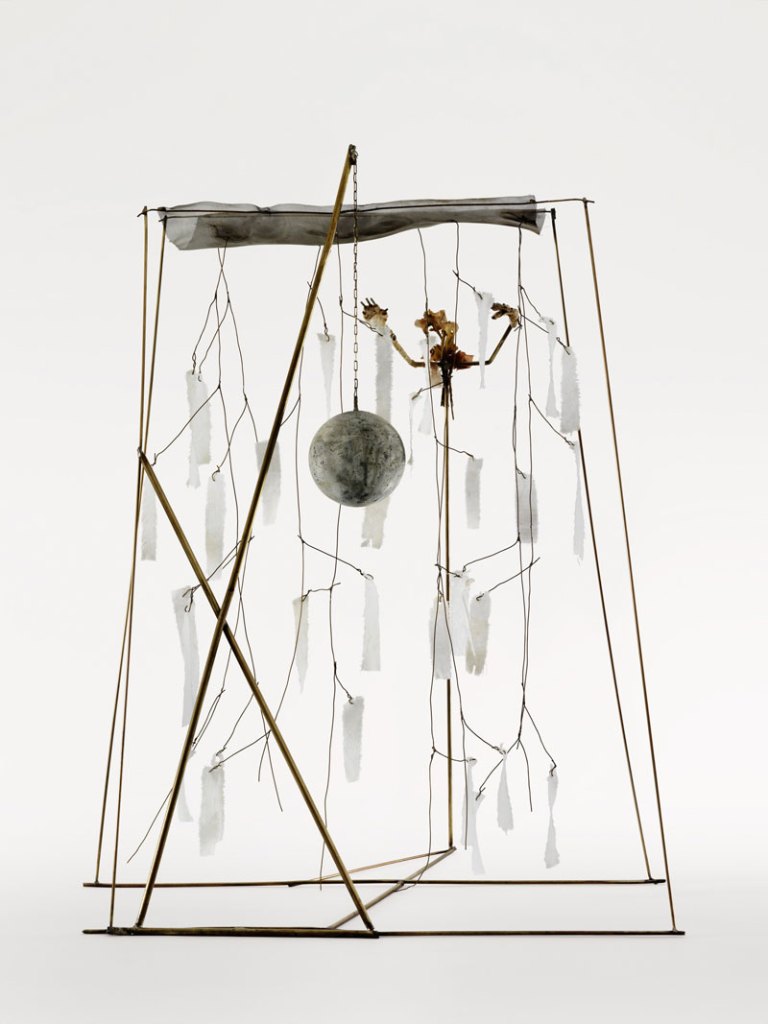
That career began in Milan in the 1930s and is represented here by works from his first solo show at Galleria Il Milione in 1935. These early examples of sculptural abstraction were exhibited in the same year the gallery published Kn, a manifesto for artistic abstraction, by Melotti’s cousin Carlo Belli. The geometric purity, if not the interest in colour, of Belli’s text – called ‘the gospel of abstract art’ by Wassily Kandinsky – is apparent in the rigour and lyricism of Melotti’s lines. The apparent solidity of the plaster works known as Sculpture No. 11 (1934) and Sculpture No. 12 (1934/1968) belies their fragility, and the addition of curving staves of wire to the geometric plaster forms of Sculpture No. 24 (1935/1968) anticipates his works of the 1960s.
Sculpture no. 24 (1935), Fausto Melotti. © Fondazione Fausto Melotti, Milan
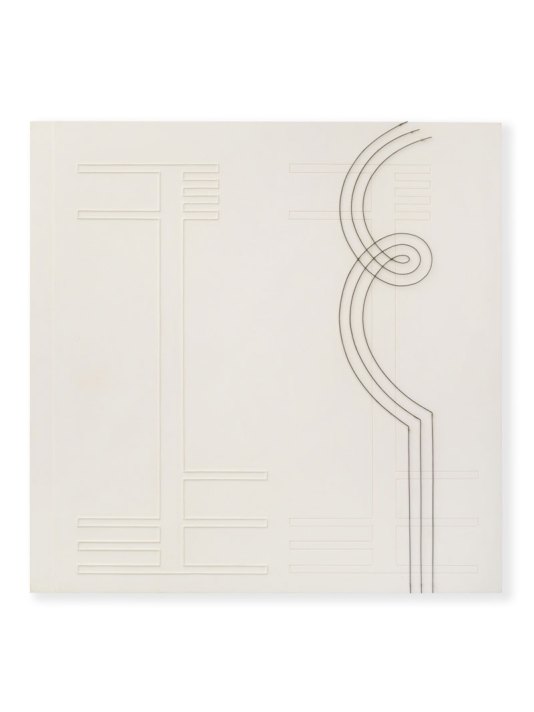
The contrast with Melotti’s work of the 1940s is striking. Unable to reconcile himself with producing abstract art in the aftermath of the war, Melotti turned to small terracotta figures, often Devils. Although in the following decades Melotti returned to his earlier abstraction, this exhibition places the Devils alongside later figurative pieces, to emphasise that this phase was not an anomaly. The sombre standing figures of the maquette for his monumental The Seven Sages (1960) recall the De Chirico-esque forms of a 1932 drawing. The Monument to the Politically Persecuted (1962) and The Rain (1966) appear abstract from a distance, but the hanged and hanging people of the former, and the slender crowd and falling rain of the latter, are unequivocally figurative.
Devil (c. 1935), Fausto Melotti. © Fondazione Fausto Melotti, Milan

The tension continues throughout the exhibition. Orpheus Oblivious (1975) combines an outline of a figure painted on a banner with a downpour of cassette tape – it is so extraordinary that it makes other works in the room look almost banal. While music invades Orpheus Oblivious directly as a medium, it is always hinted at in the abstract forms to which Melotti repeatedly returns. His Themes and Variations I (1968/1984) develop forms like melodies. The best descriptions for these melodies can be plucked from the Six Memos for the Next Millennium (1988) by Melotti’s friend Italo Calvino: lightness and quickness.
Orpheus Oblivious (1975) Fausto Melotti. © Fondazione Fausto Melotti, Milan
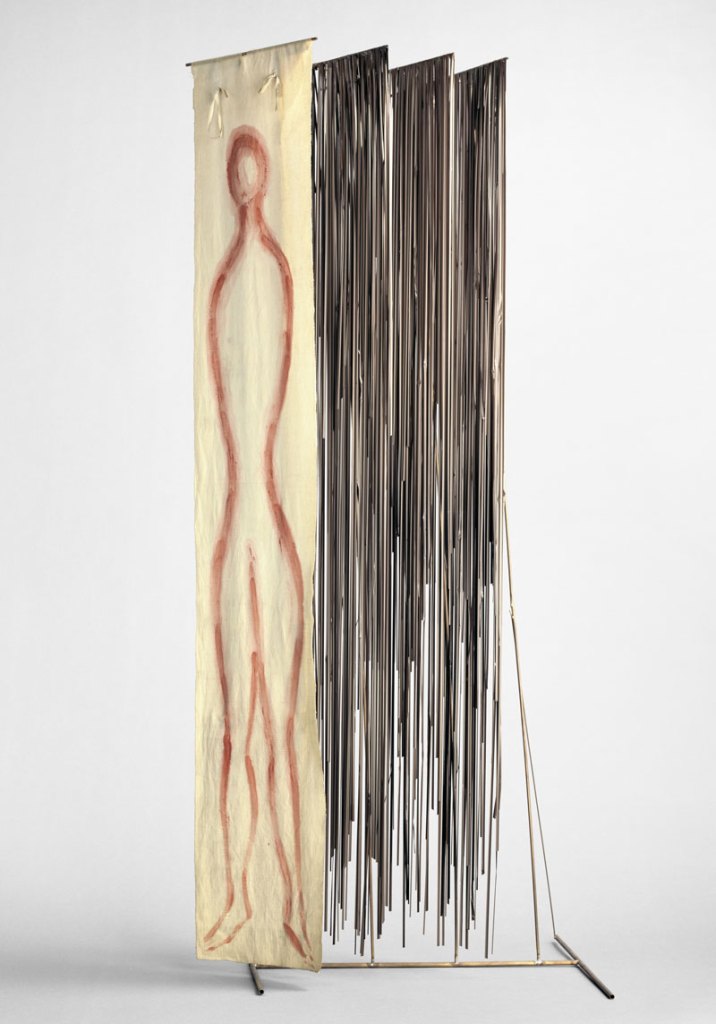
While Calvino’s name has become well known, that of Melotti, whose works adorn many of the author’s volumes, has lost familiarity in the 30 years since his death, especially outside Italy, despite New York galleries continuing to show him. This exhibition’s presentation of Melotti’s career, with all its eccentricities, should ensure that the conductor’s snowflakes remain aquiver.
‘Fausto Melotti’ is at Hauser & Wirth New York until 18 June 2016.

